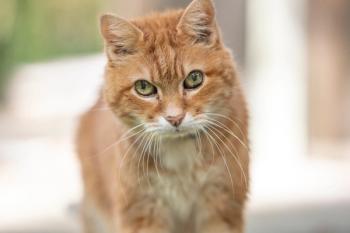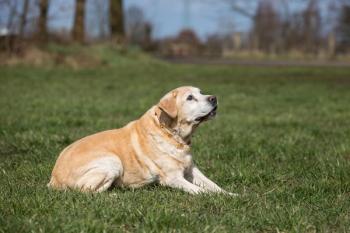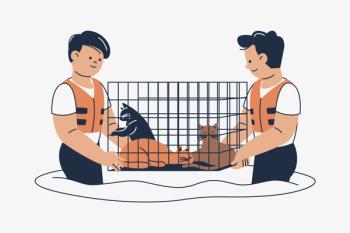
Moo-ving pain research in heifers
Veterinary researchers are examining whether a decrease in eye temperature may give visual clues that point to stress to a cow's nervous system.
A decrease in eye temperature can indicate stress to a cow's nervous system, giving researchers the opportunity to monitor the animal's well-being. This thermal image was taken as part of a research project on calves' responses to a horn-removal procedure common to dairy cattle. Photo by Kyle Karlen, University of Wisconsin-Madison. A starry night. Cows graze placidly in the fields, their bodies colorful thermal heat maps against the blue of the cool night. One lifts its head, gazing toward the camera and you see it-signs of pain. Or at least, signs of a decrease in eye temperature that can indicate stress to a cow's nervous system. Kyle Karlen, a DVM candidate, class of 2020, at the University of Wisconsin-Madison School of Veterinary Medicine, is part of a research team examining this topic.
"The photo was taken as part of a larger and more extensive research project that we are currently working toward publication called 'Analysis of Cortisol, Substance P, ocular and horn bud thermography, pressure algometry, and rate of gain in response to caustic paste disbudding with the use of oral meloxicam in Holstein heifer calves,'" Karlen says. "In addition to several of the more technical yet less aesthetically pleasing procedures described in the title, we used a thermal camera in an attempt to elucidate the pain response associated with disbudding in 3-day-old dairy calves via caustic paste."
Karlen says previous studies on disbudding and other painful procedures used a thermal camera for a technique known as ocular thermography, which works on the fight-or-flight response where an increase in stress causes stimulation of the sympathetic nervous system, resulting in vasoconstriction around the eye and therefore a marked decrease in eye temperature.
"In this project, we also developed a procedure that we called horn bud thermography, where we took a picture of the horn bud area before and after disbudding to monitor the heat and inflammation resulting from the procedure," he says. "We adapted many of the methods used by Dr. Hans Coetzee in previous research projects on cautery disbudding. We chose to research caustic paste disbudding because it is becoming more widely adopted by large, progressive dairy farms in recent years, but there was a lack of research on the subject. The procedure appears to be very simple and innocuous, but we wanted to investigate it and the effects of oral meloxicam on the pain response to it in an attempt to improve animal welfare."
Newsletter
From exam room tips to practice management insights, get trusted veterinary news delivered straight to your inbox—subscribe to dvm360.






